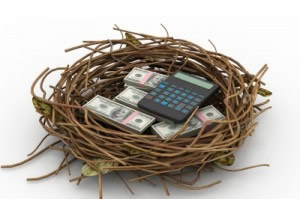Protecting yourself from overdraft protection: 4 steps you should take
By Richard Barrington

Overdraft protection.
The words sound almost comforting--like an extra layer of security around your checking account--or perhaps a safety net to catch any mistake you might make in your account records.
Under certain circumstances, overdraft protection can be those things, but to many bank customers, overdraft protection is an exorbitant expense that just makes overdrafts worse.
Since one of the things you'll be asked to do any time you open a checking account is whether to have overdraft protection for your account, you need to know how overdraft protection works, and whether it is likely to work for you or against you.
Overdraft protection--how it works
An overdraft occurs when you use more money than you have available in your checking account. If you have overdraft protection, the bank will temporarily make funds available to you to cover the purchase--think of this as a short-term loan. This way, you are able to complete your transaction without having a check bounce or your debit card declined.
By helping you out in this way, overdraft protection can save you from inconvenience and embarrassment. However, there is a hefty cost for this service. According to economic research firm Moebs $ervices, the average overdraft fee is currently $27.50. These fees are charged per overdraft transaction, so if you use your debit card four times while your account is overdrafted, you would incur four overdraft fees.
Trends in overdraft protection
Over the years, overdraft fees have become a major profit center for banks, and average overdraft fees have risen steadily in the past 25 years. However, in 2010, new Federal Reserve guidelines went into effect requiring banks to obtain consent, commonly known as an "opt-in," from customers participating in overdraft protection programs.
Moebs $ervices estimates that 75 percent of checking account customers have opted into overdraft protection. To help persuade customers to opt in to overdraft programs, banks have gotten a little more competitive about overdraft fees, with the average fee falling from $28 to $27.50 in late 2010. These fees vary greatly from bank to bank, and tend to be much higher at large Wall Street banks.
Overdraft protection strategies
So should you join the majority of checking account customers by opting for overdraft protection? Or do the 25 percent of customers that opted out represent the smart money? The answer really depends on your banking habits, so here are four steps you should take to decide whether you need overdraft protection:
- First, do the math. Look at your banking history to see how cost-effective overdraft protection is likely to be for you. If you have a $500 checking account that you overdraft once every ten years, at the $27.50 average fee overdraft protection would cost you just over a half a percent a year. However, if you overdraft that account ten times a year, you'd be spending more than half your account on overdraft fees. Protection like that is something you can live without.
- Link checking to a high interest savings account or other deposits. Some banks will let you link your checking account to a savings account, with balances transferring from saving to checking when needed to avoid overdrafts. This way, you can keep more money in the high interest savings account until it is absolutely needed. Just make sure the cost of balance transfer fees doesn't negate this benefit.
- Keep an extra cushion in your checking account. These days, even high yield savings accounts are paying modest interest rates. Therefore, you won't miss out on much by keeping a little extra in checking to avoid overdrafts. If, after doing this, you find that you still come close to the line regularly, overdraft protection may be a good option.
- Shop for low overdraft fees. If you decide you have to have overdraft protection, shop around to find the lowest overdraft fees you can, which can mean turning to local banks and credit unions.
There is no universal answer as to whether overdraft protection is a good or bad deal for checking account customers--it really depends on how you use the account. However, given that overdraft protection is most cost-effective for people who rarely need it, the rule of thumb should be: when in doubt, opt out.
Richard Barrington has earned the CFA designation and is a 20-year veteran of the financial industry, including having previously served for over a dozen years as a member of the Executive Committee of Manning & Napier Advisors, Inc. Richard has written extensively on investment and personal finance topics.